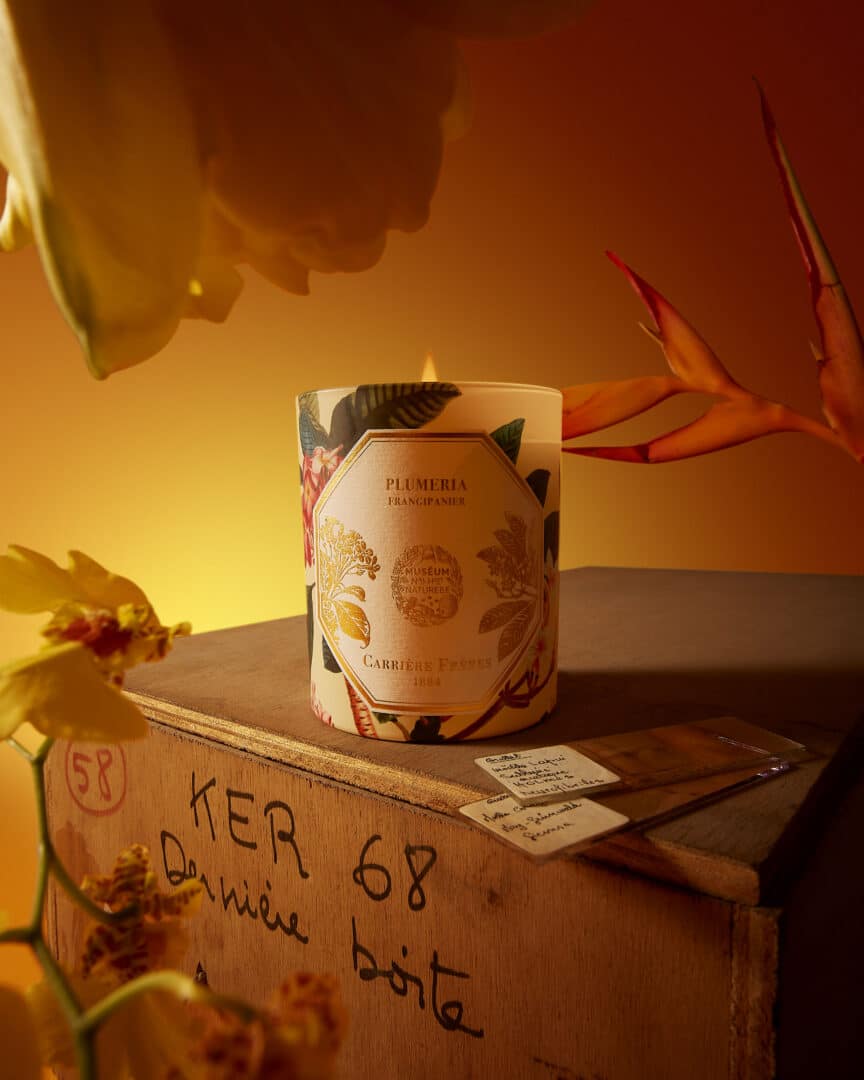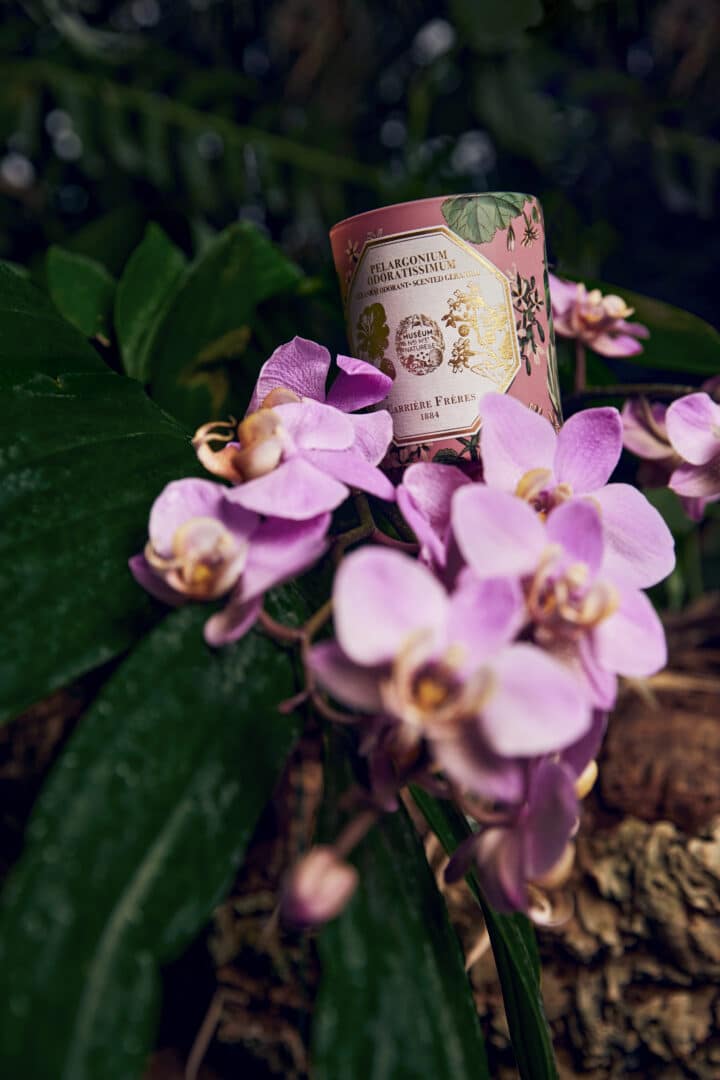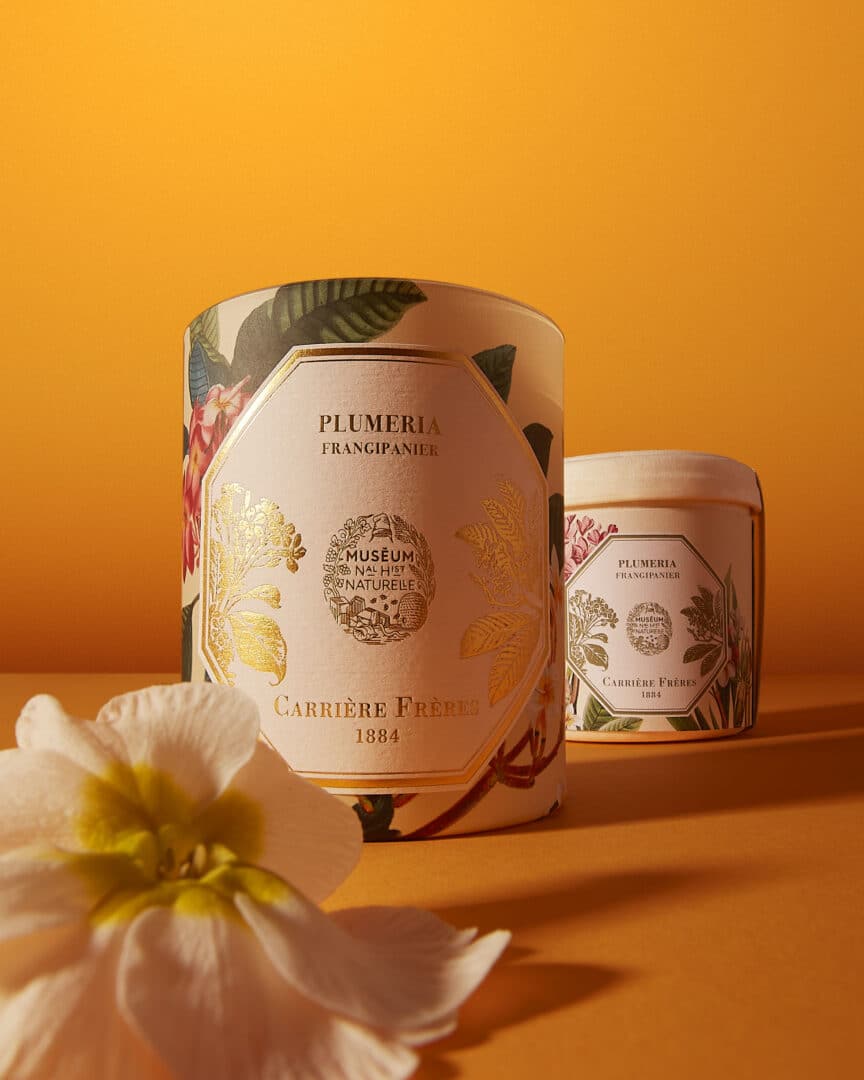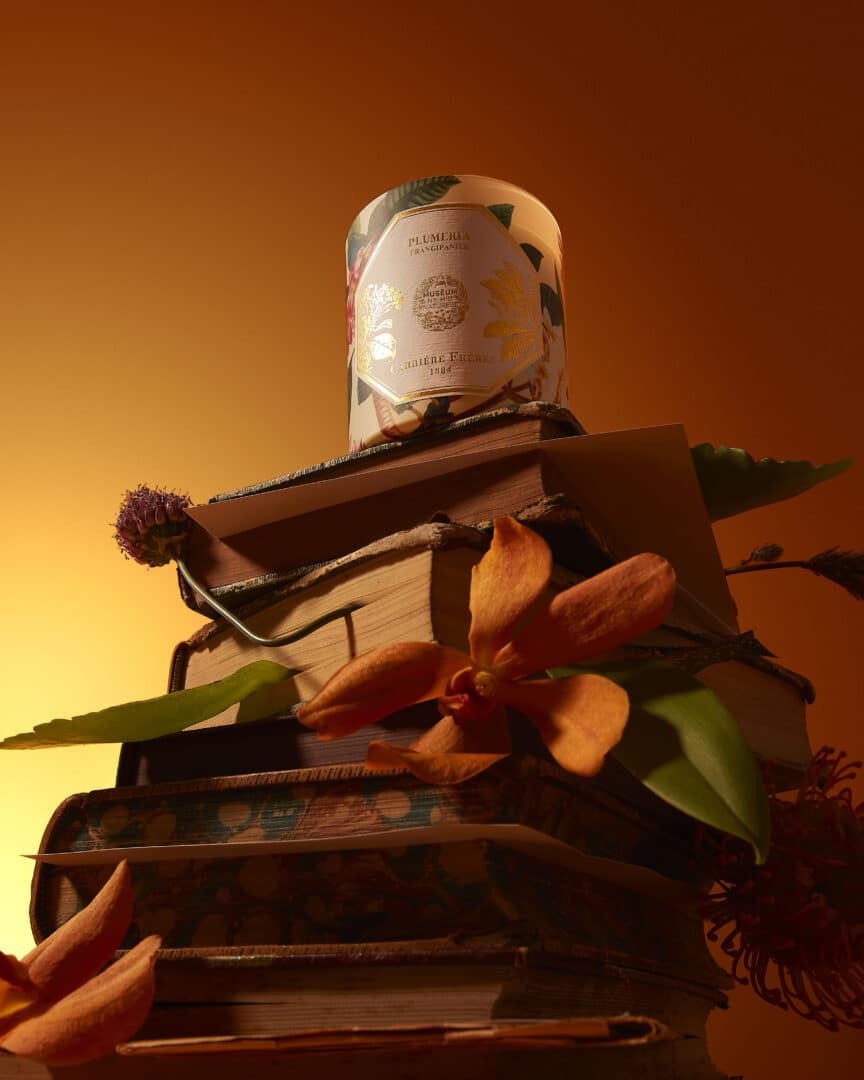Regular readers of this blog will know that I have a particular soft spot for the candle manufacturer Carriére Frères. And so I am delighted to have had the opportunity to interview Creative Director Julien Pruvost. He gave me some exciting details about the brand’s Museum Collection and the latest scented candle, Plumeria – Frangipani, which has recently become available at Aus Liebe zum Duft. I will of course be presenting these to you in my next post here, as well as a brand new product from Carrière Frères, which was launched a few weeks ago and with which the traditional candle manufacturer has added a whole new line to its range. But first let’s devote ourselves to this interview, so all that remains for me to say is …
Welcome to the Duft-Tagebuch: Julien Pruvost! 😊

Dear Julien, I have already told our readers a lot about the Carrière Frères brand in my last articles. Could you describe how the collaboration between Carrière Frères and the Muséum national d’histoire naturelle came about?
In the beginning, cooperation primarily took place via Zoom due to the pandemic. The museum has a large collection of botanical illustrations on parchment from the 17th and 18th century, which are stored in the archives. We had the chance to draw on these. Together with museum staff, we selected certain plants for the Museum Collection. It was particularly important to us to use flowers and herbs that have a particularly close relationship with the museum, such as the water lily. In one of the museum’s parks there is a large pond with giant water lilies, which seemed very fitting for us.
Did you use the museum’s original illustrations for the design of the glasses?
Right. The illustrations on the jars of the scented candles are the museum’s drawings. We have combined several variants of one species, for example three different water lilies, and then customized the background to make it harmonious.
What else was important to you in the development of the Museum Collection?
It was a decisive criterion for us to keep the scent of the candles as natural and authentic as possible. We worked with the Robertet company and here with the perfumer Serge de Oliveira, both of whom are highly respected in the field of natural perfumery. For the development of Pelargonium Odoratissimum, for example, we visited the greenhouses of the Versailles-Chèvreloup Arboretum, where countless rows of pelargoniums of all kinds can be found.
Surprisingly, these often look remarkably similar, but sometimes exude completely different fragrances. Some smell of forest, others of chocolate or apple, of rose or citrus fruits. We opted for the Pelargonium Odoratissimum variety. To recreate the fragrance, we combined the notes of hemp with grapefruit, rhubarb and lemongrass. We wanted to evoke a certain earthiness in the base, for which we used patchouli.

So the fragrances in the Museum Collection are based exclusively on natural ingredients?
For the most part, yes. We have primarily used natural raw materials, but a small proportion is also of synthetic origin.
Because some fragrances cannot be obtained naturally?
No, not because of that. But the fact is that the range of available ingredients decreases significantly if you rely exclusively on natural raw materials. The olfactory spectrum is much broader if you also have synthetic fragrances in the possible selection. In addition, the use of natural raw materials also has a significant impact on our environment, so it is sometimes more environmentally friendly to use synthetically produced ingredients.
Most recently, Plumeria – Frangipani was launched. Can you tell us something about this candle? Why exactly this flower?
Have you ever smelled the blossoms of a frangipani tree? Not? It is a very lush and penetrating fragrance that is absolutely special. For us, the frangipani stands for exploration and travel, the adventurers who sailed out into the world with their ships to explore it. This in turn fits in perfectly with the illustrations of the Muséum national d’histoire naturelle, which also date from a time when many discoveries of all kinds were made. It is also reminiscent of the French overseas territories where the frangipani naturally occurs.
But it doesn’t grow in France?
No, I don’t think so. Whereby … probably in the south of France. But I can’t say for sure.

So the frangipani was not a plant that Serge and you were able to sniff directly in order to absorb the authentic scent?
No, the frangipani scented candle is actually the only one where we were unable to smell the actual plant or flower. But this was not necessary, as the scent of plumeria is absolutely familiar to a perfumer, which is why Serge did not need any real frangipani for the olfactory realization.
The scent and the look of the candle are very summery …
That’s right, the scent of frangipani reminds many people – including me – of summer. It has such a solar, creamy note reminiscent of suntan lotion that is cheerful, lively and simply summery. Perfect for the current season. We have depicted different varieties of frangipani on the glass of the candle to show that there is not just the one and best-known white-yellow variety, but also many other colors.
These practical refill candles are available for all five scented candles in the Museum Collection. What exactly is it all about?
Sustainability is very important to us at Carrière Frères and it is also something that is of great importance to more and more people. We want to conserve resources and protect the environment. When calculating our ecological footprint, we found that a significant amount of resources are used both for the production of glass for our scented candle glaziers and for the transportation of large quantities of scented candles. To counteract this, we have developed the candle refills. This means that our customers can simply reuse the jars of our scented candles and fill them with the refill. The packaging of the refills bears the FSC seal, is sustainable and can even be composted.
You also use 100% vegetable wax for the Museum Collection scented candles …
Yes, it is 100% vegetable wax, with a considerable proportion of wax from European rapeseed. So far we have used organic rapeseed. The candle you are holding is certainly also made with organic wax. However, there are supply problems, which is why we are currently unable to use organic products. We are very keen to be transparent, which is why I am saying this here. The wax used still comes from Europe, but is not organic. We hope that this will change again soon.

Was there a candle in the collection that was particularly challenging to develop?
(laughs) That’s a good question. In fact, it’s the candles that you don’t see that were particularly challenging to develop. To be honest, we have worked on several other fragrance designs for plants, but the results were never satisfactory. These candles were therefore not launched.
But there is a funny story. The team at the Muséum national d’histoire naturelle, with whom we worked, includes a mycologist, i.e. a mushroom expert. And he told us about a wonderfully fragrant mushroom from South America that he suggested for a new scented candle. Unfortunately, we didn’t know what it smelled like. And since we couldn’t sniff the mushroom ourselves and the mycologist couldn’t describe the scent to us exactly, this candle unfortunately didn’t make it into the olfactory development.
However, I recently saw that the Spanish company Loewe has launched a mushroom room fragrance that is supposed to smell like an edible mushroom, the portobello. So it’s not so far-fetched …
Do you have a favorite candle within the Museum Collection?
My favorite candle is actually absinthe. I also like Pelargonium Odoratissimum, but the Artemisia is my favorite. But that is of course my personal taste.
Dear Julien, thank you very much for taking the time to answer my questions.

Be First to Comment